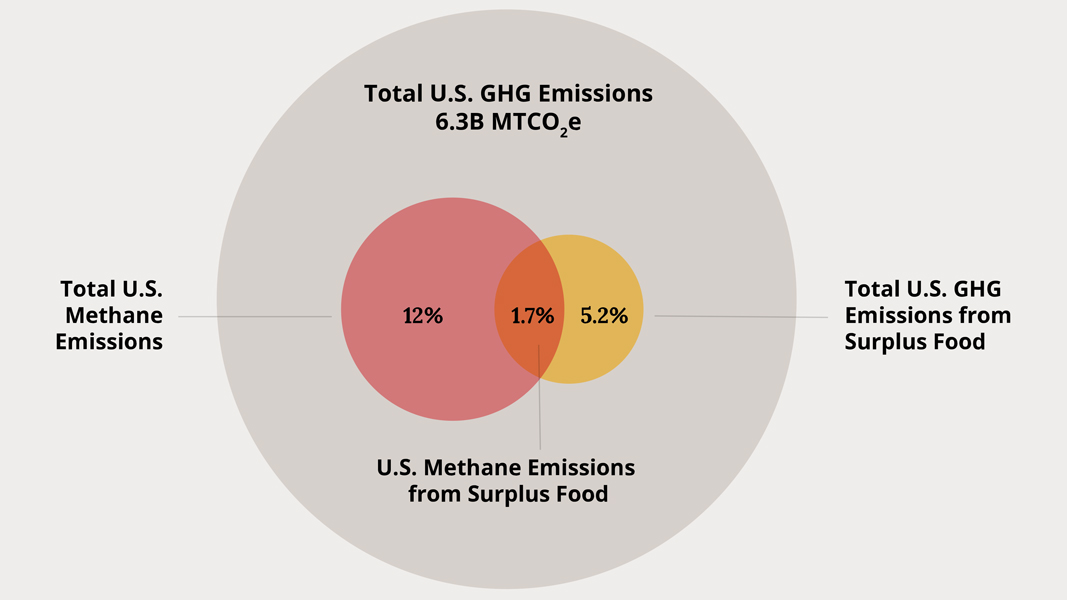Top: Total annual U.S. emissions vs. emissions from U.S. surplus food. Graphics courtesy of ReFED
ReFED, a U.S.-based nonprofit that advances solutions to food waste, released new data with support from the Global Methane Hub that identifies the methane hotspots for uneaten or “surplus” food in the U.S., and highlights corresponding solutions that can reduce waste and slash methane emissions. The analysis is the first of its kind to provide a full lifecycle view of methane emissions from surplus food. The new data found that across the U.S., surplus food is responsible for almost 4 million metric tons of methane (MTCH4) — nearly 14% of the country’s total methane emissions and the equivalent to what’s generated by 75 million cars annually. Methane comes both from food production (2.5 million MTCH4) — primarily beef and dairy — and from systems like landfills and sewers used to manage food when it becomes waste (1.5 million MTCH4). “Because of its shorter lifespan and potency, reducing methane emissions is seen as an emergency brake in the fight against climate change,” explains Dana Gunders, president of ReFED. “This new data emphasizes how wasting less food is a critical lever, because it is effectively a one-two punch, reducing methane both in the production of food as well as in its disposal.”
 Three key strategies to achieving reduced methane emissions from food loss and waste are identified:
Three key strategies to achieving reduced methane emissions from food loss and waste are identified:
- Establishing organics diversion infrastructure, which could avoid an estimated 800,000 MTCH4 (2.8% of total U.S. methane emissions) from landfill and sewer. “Centralized and community recycling solutions such as composting and anaerobic digestion present the greatest overall opportunity for reducing total methane emissions — 680,000 metric tons/year,” says ReFED. “This would require a little over $5 billion to scale up infrastructure but would add 24,000 jobs over a 10-year period.”
- Addressing consumer food waste, which could avoid an estimated 463,000 MTCH4 (1.6% of total U.S. methane emissions). According to the analysis, “consumer education campaigns, smaller portion sizes, meal kits, and standardization of date labels would avoid 463,000 metric tons/year of methane, nearly a quarter of all methane avoided by the full suite of ReFED’s modeled solutions. These solutions also tend to be more cost-effective, requiring $870 million to fully implement but saving consumers $34 billion.”
- Incentivizing business adoption of food waste prevention solutions, which could avoid an estimated 400,000 MTCH4 (1.4% of total U.S. methane emissions). “A range of practices including line optimization and byproduct utilization in manufacturing, and markdown alert applications, decreased transit time, and waste tracking in retail and foodservice can avoid over 400,000 metric tons/year of methane emissions at a cost of $6.8 billion to put into practice but saving businesses $16.5 billion collectively,” notes the study.













